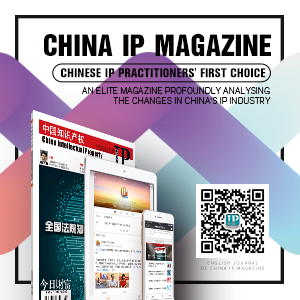I. Excluding the claims outside the scope of acceptance by the court and claims without right(interest) base
(1) Determining whether the suit of trademark infringement is within the scope of acceptance
a. The court should not accept the dispute over infringement between registered trademarks, which means that the standard use of post registered trademark constitutes no infringement upon the prior registered trademark. Firstly, there should be an examination of whether the allegedly infringing registered trademark is a standard use. The exclusive right to use a registered trademark shall be limited to the trademark registered upon verification and approval and the goods approved to be designated to be covered by the trademark.Trademark registrant shall not change the registered trademarks for use without authorization. The people's court shall not accept (reject in the form of written order after docketing the case) the suit brought by the plaintiff on the grounds that others' use of trademark registered upon verification and approval and the goods approved to be designated to be covered by the trademark is identical with or similar to his prior registered trademark was within the scope of "trademark registered upon verification and approval and the goods approved to be designated to be covered by the trademark", the disputes between Shenzhen Ellassay Fashion Co., Ltd.and Wang Suiyong over the registered trademarks "Gelisi" (category 25) and "Gleas" & "Gelisi" (category 25) are conflicts of rights between registered trademarks and outside the scope of acceptance for civil actions by the people's courts which should not be heard. The parties should, according to the dispute resolution procedure concerning registered trademarks provided for in China’s Trademark Law, seek for administrative resolution.
b. The people's court should accept the lawsuit brought by the plaintiff on the grounds that others’ uses of registered trademarks such as outside the scope of verified and approved goods and in the form of changing the distinctive features, separation or combination of such trademark, are identical with or similar to the plaintiff’s registered trademarks.
(2) Excluding the claim bases that the plaintiff has no facts to prove
In this case, it refers to the dispute that whether "Gelisi clothing" constitutes a specific name for well-known goods. The goods having certain market notability within the territory of China and being known to the relevant public should be ascertained as well-known goods. The name of goods with distinctive features to indicate the goods’ source should be deemed as the specific name of well-known goods. In determination of well-known goods,the people's court should make a comprehensive consideration of the factors such as the selling period, distributed area, sales volume, targeted consumers, the duration,extent and geographic scope in terms of popularization, and the protection as well-known goods. According to the past legally effective judgments concerning the protection for well-known goods’ special names such as the case of "Nin Jiom Pei Pa Koa"determined by China’s Supreme Court, the goods’ name itself has the distinctive features to indicate the goods’ source and specifically and directly points to the goods so that the relevant public (consumers) can associate such name with the specific goods. The evidences submitted by the plaintiff in this case show that the main goods it used the trademark "Gelisi" in manufacturing and popularization are women's clothing, whereas "clothing" is a general and superior category concept with relatively large scope, including the clothing for women, men and children. The name of "Gelisi clothing" itself has no clear, specific and direct designation because the consumers will not associate it with specific goods such as women’s clothing. In summary, the plaintiff’s claim should not be sustained because there is no sufficient rationale that "Gelisi clothing"constitutes a specific name for well-known goods.
II. Accurately determining the nature of the alleged infringement for clear clarification of the boundary between the alleged infringing acts
(1) The allegedly infringing acts independently committed by all defendants. The people’s court should identify, classify and determine the nature of every alleged infringement upon trademark right and unfair competition because the use of trademark is usually interconnected with the acts such as the use of brand name, enterprise name and shop name. If the plaintiff can not accurately state the nature of his allegedly infringement, the court of first instance should make timely aufklarungsrecht. For example, the alleged infringement acts in the case includes the registration and use of trademark "Gelilsi" and the use of "Gelilsi" as a shop name. If there are multiple defendants, there maybe types of alleged infringements concerning different natures, e.g.,the defendant Liu Yang’s sale of the allegedly infringing goods, women’s handbag, in the case.
(2) Whether the acts committed by defendants constitute joint infringement. The plaintiff also often claims that the multiple defendants committed a joint infringement and that they should bear joint and several liabilities for damages. The people's court should question the legal basis the plaintiff claiming for joint infringement. That is to say,whether they jointly committed infringement, aid or abet another person to commit infringement.Therefore, the logic for the people's court to ascertain the facts of alleged infringement is as follows:the nature of the alleged infringing act independently committed by every defendant (such as the use of alleged infringing label, shop name or sale of alleged infringing goods)→ whether the act committed by every defendant constitutes a joint infringement (joint commitment, aid or abet).










